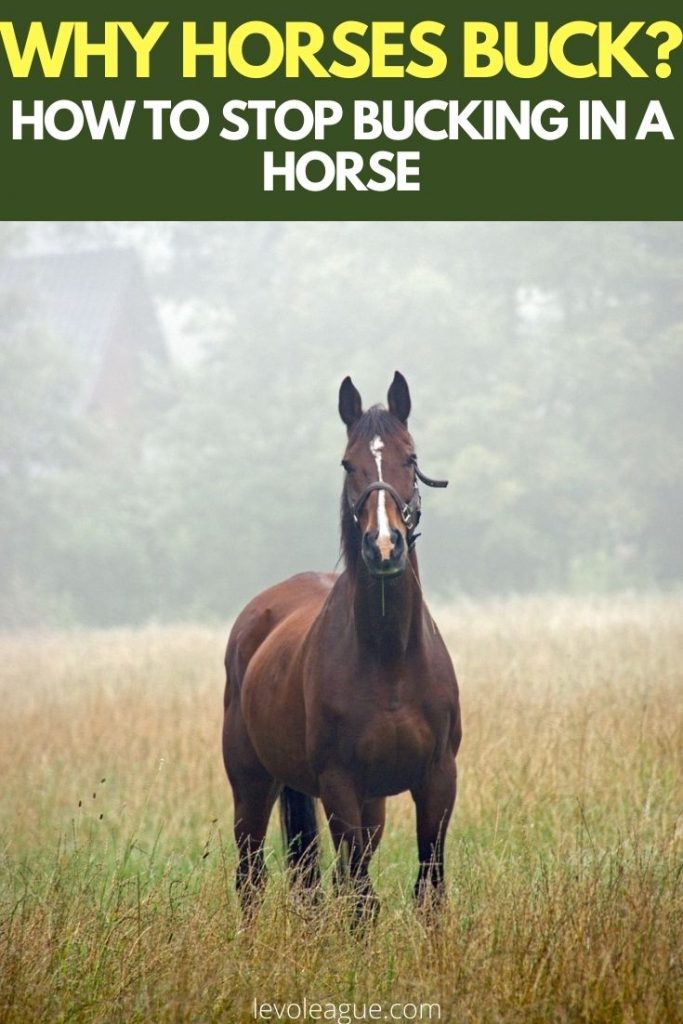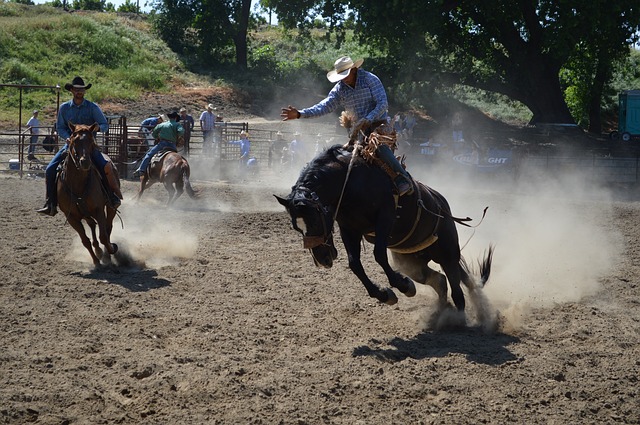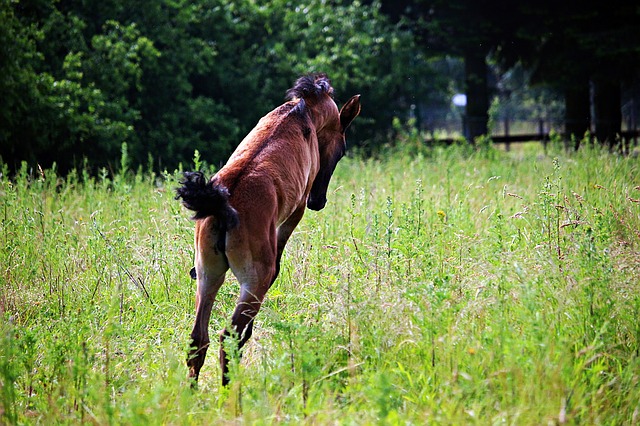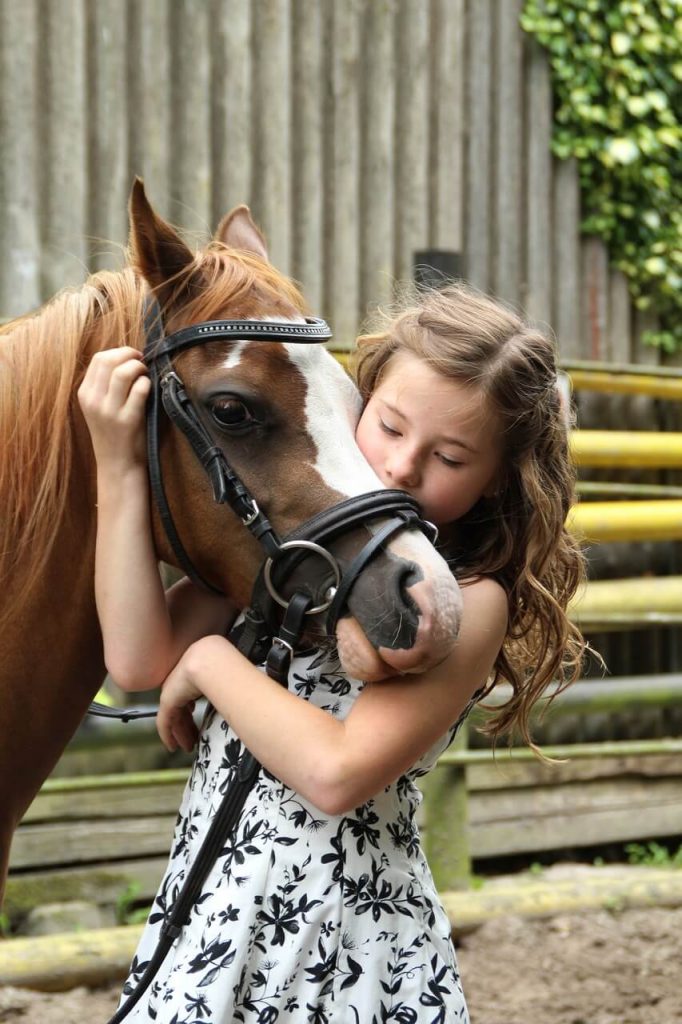Horses buck for many reasons, but it always signifies a problem. Riders must determine whether a bucking horse is misbehaving or trying to communicate something else. Generally, bucking refers to a dangerous movement done by a horse that involves lowering its head, raising its hindquarters into the air, and kicking out with the hindlegs.
A well-rounded training program is always beneficial for horses, regardless of discipline. Jumper riders who vary their routines with flatwork will strengthen every aspect of their horses’ development rather than focusing on just one.
It is easy to assume that a bucking horse is being “bad.” After all, this behavior is dangerous to the rider and it seems to be an act of rebellion. However, this assumption ascribes human logic to the equine brain, and it does not take into account equine instinct.
A horse that bucks is trying to tell the rider something. He might be saying:
- I’m tired.
- Something hurts.
- I’m angry.
- I am not capable of this.
- You are confusing me.
In most cases, frustration is the root reason why horses buck, but it is symptomatic of an underlying problem. If a rider can identify this problem, he or she will be able to prevent the episode from recurring and protect himself or herself from the risk of accidents and injuries.

Ruling Out Pain in a Bucking Horse
Physical pain is a common reason why horses buck. If the horse has a strained back or leg muscle, or some other affliction, bucking might be the only way in which he can communicate that pain. He is asking the rider to stop, dismount and take care of him.
Usually, a horse bucks due to pain when the rider asks him to change something. It might occur when the rider mounts, during a transition, or at the beginning of a lateral movement. The change causes something to hurt (or hurt worse), and the horse lashes out in pain.
Luckily, there are ways to protect the horse from pain. One of them is using a saddle pad while riding the animal. It refers to a piece of cushion positioned under the saddle to protect the horse’s back from the weight of the rider. Since it’s available in various colors, shapes, and sizes, one can use it for several riding styles. Another good thing about this padded piece of material is that it’s usually made from ultra-soft cotton or sheepskin to maximize comfort.
Whether it’s a dressage or jumping horse, the saddle pads or numnahs can prevent the pain associated with a strained back. So, if you’re looking for numnahs to improve horse comfort, you can visit some stores online to get more options.
However, it’s vital to know that pain isn’t the only reason for horse bucking. If a rider notices that his horse is bucking at intervals of change, she should immediately attempt to rule out all causes of pain. If none exists, only then should she treat bucking as behavioral.
When Horses Misbehave

Horses misbehave all the time, though usually it is a matter of confusion or frustration rather than malice. A bucking horse is not trying to hurt his rider or cause damage to property, but he wants to escape whatever situation has made him uncomfortable.
It is the rider’s job to determine what event or circumstance created the frustration. It might be a different bit or saddle, or it could be a reaction to the cues the rider is using. Whatever the case, the rider should find another way to communicate with his horse.
A relaxed, responsive horse does not buck. Armed with this knowledge, riders can stop bucking by taking the training session back to basics. Give the horse a command that he has always followed in the past and start over on a positive note.
When working with a horse that bucks, it is important to realize that punishment will not resolve the problem. It is the rider’s job to show the horse that they can work in unison without lashing out aggressively.
Bucking from Excitement

One of the less common reasons why horses buck is from excitement. A fit, energetic, boisterous animal will often buck to release pent-up energy; it is the equivalent of a person dancing in place or jumping in the air to celebrate a promotion.
If a horse is bucking from excitement, he needs a job. The rider should give the horse something on which to focus his attention, which will distract him from his excitement and make bucking less likely. This is not a behavior that should be punished; it is a behavior that tells the rider he is not doing enough to occupy his horse’s mind.
How to Stop Bucking in a Horse

The best way to stop bucking, regardless of the reason, is to give the horse a direction. If he is focused on turning one way or another, he cannot summon the energy to buck. Furthermore, if a horse is turning in a tight enough circle, he is physically unable to dip his head and launch his hind legs in the air.
This is only a temporary solution, however, because eventually the rider must send the horse straight again. When this happens, the bucking might resume and escalate to a dangerous level.
Riders should understand horse anatomy to stop horses from bucking. In order to buck successfully, the horse’s head must go down and his hind end must go up. Lifting the horse through the seat and the legs will discourage – or even prevent – bucking.
Conclusion
Dealing with a bucking horse can be frustrating, especially if it poses harm to the rider. Fortunately, there are methods used to correct a horse’s bucking behavior. But before applying these methods, it’s essential to keep the information above in mind to understand the reasons behind the buck. That way, you’ll know exactly how to stop the animal from bucking.










